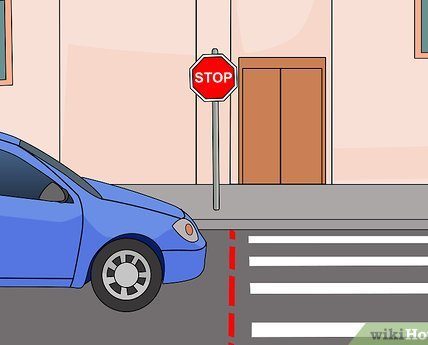Sterilising MAM bottles is essential for ensuring your baby’s health and safety. You can easily achieve this through several effective methods that kill harmful bacteria and germs. Whether you opt for boiling water, steam sterilisation, or using a microwave steriliser, each approach guarantees clean bottles for feeding. In this guide, we’ll explore the best ways on how to sterilise MAM bottles, so you can provide your little one with a safe and hygienic feeding experience.
How to Sterilise MAM Bottles
When it comes to caring for your baby, keeping their feeding bottles clean and safe is extremely important. MAM bottles are popular among parents for their ease of use and unique designs. However, it’s vital to ensure they are properly sterilised before each use to protect your little one from harmful germs and bacteria. In this section, we will explore the best methods for sterilising MAM bottles, the equipment needed, and tips for maintaining a safe feeding environment.
Understanding Why Sterilisation is Important
Sterilisation eliminates harmful bacteria and viruses that can linger on your baby’s feeding equipment. Here’s why you should make it a priority:
– **Health Safety**: Newborns and infants have developing immune systems, making them more susceptible to infections.
– **Preventing Illness**: Germs can cause gastrointestinal issues or respiratory infections in babies.
– **Promoting Healthy Development**: Clean feeding tools help ensure that your baby gets the right nutrients without the risk of illness.
Sterilising your MAM bottles regularly, especially during the first year of your baby’s life, is essential for their health.
Materials You Will Need for Sterilising MAM Bottles
Before you start, gather the following items to make the process efficient:
– **MAM Bottles**: Ensure you have all the parts including nipples and caps.
– **Steriliser**: Choose from electric, microwave, or stovetop options.
– **Clean Water**: Use fresh, clean water for the sterilisation process.
– **Tongs**: Use tongs to handle sterilised items and avoid contamination.
– **Clean Towels**: Keep these handy for drying the bottles or placing sterilised items on.
– **Dish Soap**: To wash the bottles before sterilising.
Different Methods of Sterilising MAM Bottles
You can choose from several effective methods to sterilise MAM bottles, each with its own advantages. Let’s explore each method in detail.
Boiling Method
Boiling is a traditional and effective way to sterilise bottles.
**Steps:**
1. **Wash the Bottles**: Clean the bottles, nipples, and caps with soap and water. Rinse them thoroughly.
2. **Fill a Pot with Water**: Pour enough water into a large pot to cover all bottle parts.
3. **Bring Water to a Boil**: Heat the pot on the stove until the water reaches a rolling boil.
4. **Add the Bottles**: Carefully place the washed MAM bottles and their parts into the boiling water using tongs.
5. **Boil for 5-10 Minutes**: Let the bottles boil for at least five minutes to ensure proper sterilisation.
6. **Remove and Dry**: Use tongs to take the bottles out of the water. Place them on a clean towel to dry.
**Pros:**
– Cost-effective method.
– No need for special equipment.
**Cons:**
– Requires constant supervision.
– Bottles may become hot, so handle with care.
Electric Steriliser
Electric sterilisers are an excellent option if you prefer a more automated process.
**Steps:**
1. **Read the Instructions**: Each steriliser may have specific instructions. Refer to the manual provided.
2. **Wash the Bottles**: Like the boiling method, wash the bottles and parts thoroughly.
3. **Add Water**: Pour the amount of water indicated in the steriliser instructions.
4. **Load the Bottles**: Arrange the MAM bottles, nipples, and caps in the steriliser.
5. **Turn on the Steriliser**: Set the timer as per the manufacturer’s recommendations.
6. **Wait for It to Complete**: Most electric sterilisers will indicate when the cycle is complete.
**Pros:**
– Easy to use and requires minimal effort.
– Some models keep items sterile for several hours.
**Cons:**
– Requires an initial investment.
– Takes up space in your kitchen.
Microwave Steriliser
If you have a microwave, this is a quick and efficient method.
**Steps:**
1. **Prepare the Bottles**: Clean the bottles and all parts.
2. **Use Microwave Steriliser**: Place the bottles in a microwave-safe steriliser filled with water as recommended by the manufacturer.
3. **Microwave**: Heat in the microwave for 3-8 minutes, depending on your microwave wattage.
4. **Remove and Cool**: Carefully remove the steriliser with tongs, as it will be hot.
**Pros:**
– Fast and convenient.
– Minimal space compared to electric sterilisers.
**Cons:**
– Requires a microwave-safe container.
– Not all bottles may fit comfortably.
Chemical Sterilisation
Chemical sterilisation is another method you might consider, especially when on the go.
**Steps:**
1. **Purchase Sterilising Tablets**: Look for sterilising tablets or solutions that are safe for baby items.
2. **Wash the Bottles**: As with other methods, start by cleaning the bottles.
3. **Dissolve the Tablets**: Follow instructions to dissolve the tablet in water in a suitable container.
4. **Soak the Bottles**: Submerge the bottles and parts in the solution for the recommended time.
5. **Rinse (if necessary)**: Some chemical solutions may require rinsing, so check the instructions.
6. **Dry**: Place the sterilised items on a clean towel or drying rack.
**Pros:**
– Portable; easy for travel.
– No need for heat sources.
**Cons:**
– Requires purchase of specific products.
– Some solutions may leave a residue.
How Often Should You Sterilise MAM Bottles?
Determining how often to sterilise your baby’s bottles depends on their age and health. Here are some guidelines:
– **Newborn to 3 Months**: Sterilise bottles after each use.
– **3 to 6 Months**: You can reduce sterilisation to once a day if your baby is healthy.
– **6 Months and Older**: You may not need to sterilise as often, but it’s wise to continue washing and cleaning thoroughly.
Always consider your child’s health and consult with a pediatrician if unsure.
Tips for Maintaining Clean MAM Bottles
Keeping your MAM bottles in good shape extends their usability and ensures safety. Here are some practical tips:
– **Immediate Cleaning**: Rinse bottles immediately after use to prevent formula residue from sticking.
– **Use Hot, Soapy Water**: Always wash bottles with hot, soapy water, focusing on the nipples and caps.
– **Inspect Regularly**: Check for wear and tear. Replace any damaged parts to avoid leaks and contamination.
– **Store Properly**: Once sterilised, store bottles in a clean, dry place. Keep them covered until ready for use.
– **Avoid Strong Chemicals**: Stay away from harsh detergents or bleach that can damage bottles or leave harmful residues.
Common Mistakes to Avoid When Sterilising MAM Bottles
To ensure effective sterilisation, avoid these common pitfalls:
– **Skipping the Wash**: Never sterilise dirty bottles. Always wash them first to remove milk residue.
– **Inadequate Time**: Not boiling or exposing bottles to sterilisation long enough can leave harmful germs.
– **Ignoring Manufacturer’s Instructions**: Follow specific instructions based on the steriliser you choose for optimal results.
– **Not Using Tongs**: Always handle sterilised items with tongs to avoid contamination.
The Importance of Choosing the Right Bottles
While we’re focusing on sterilising MAM bottles, it’s essential to choose bottles that are easy to clean and sterilise. MAM bottles are designed with wide openings, making them convenient for thorough washing.
**Consider the following when selecting feeding bottles:**
– **Material**: Look for BPA-free plastic or glass options.
– **Design**: Opt for bottles that disassemble easily for cleaning.
– **Size**: Choose sizes that fit your baby’s needs, allowing for gradual increasing in volume as they grow.
Understanding the significance of both sterilisation and bottle choice can help significantly reduce the risk of infections and ensure your baby gets nourishment safely.
By maintaining a diligent routine of washing and sterilising your MAM bottles, you create a healthy environment for your baby. Keep in mind that cleanliness contributes not only to health but also provides peace of mind for parents. Your diligence in practising proper sterilisation techniques will protect your little one and allow them to thrive.
MAM Anti-Colic Self Sterilising Bottles
Frequently Asked Questions
What are the different methods to sterilize MAM bottles?
There are several effective methods to sterilize MAM bottles. You can use boiling water, steam sterilizers, microwave sterilizers, or chemical sterilization solutions. Boiling involves placing the bottles in a pot of water for about 5-10 minutes. A steam sterilizer uses heat and steam to kill bacteria. Microwave sterilizers work by using steam generated from water in the container, while chemical sterilization involves using special sterilizing tablets or solutions that you mix with water.
How often should I sterilize my MAM bottles?
You should sterilize MAM bottles before the first use to ensure they are free from any harmful germs. After that, sterilization is typically recommended until your baby is at least 12 months old. During this time, it’s best to sterilize bottles after each use, especially if your baby was born prematurely or has a weakened immune system.
Can I wash MAM bottles in the dishwasher instead of sterilizing?
While washing MAM bottles in the dishwasher can help remove dirt and milk residue, it does not sterilize them. You can wash the bottles using the dishwasher with a hot water cycle, but you should still follow up with a sterilization method to ensure all bacteria are eliminated, especially for infants under 12 months.
Is it necessary to sterilize MAM bottles after every feed?
It is essential to sterilize MAM bottles after the first use and regularly until your baby is about 12 months old. Although it may not be strictly necessary after each feed for older infants, many caregivers still choose to do so, especially during times of illness or if the baby has a compromised immune system.
What should I do if I cannot sterilize the MAM bottles immediately?
If you cannot sterilize MAM bottles immediately after use, rinse them thoroughly with hot soapy water and store them in a clean place until you can sterilize them. Make sure to avoid any contact with unclean surfaces or potential contaminants. However, aim to sterilize them as soon as possible to ensure your baby’s safety.
Final Thoughts
To effectively sterilise Mam bottles, you have several options available. Boiling water is a simple and proven method; submerge the bottles for five to ten minutes. Alternatively, use a steam steriliser, which provides thorough sanitation in a shorter time.
You can also use sterilising tablets or solutions, following the manufacturer’s instructions for safe and efficient results. Remember to let the bottles cool down before using them. Following these steps will ensure that you know how to sterilise Mam bottles properly, keeping them safe for your baby.





